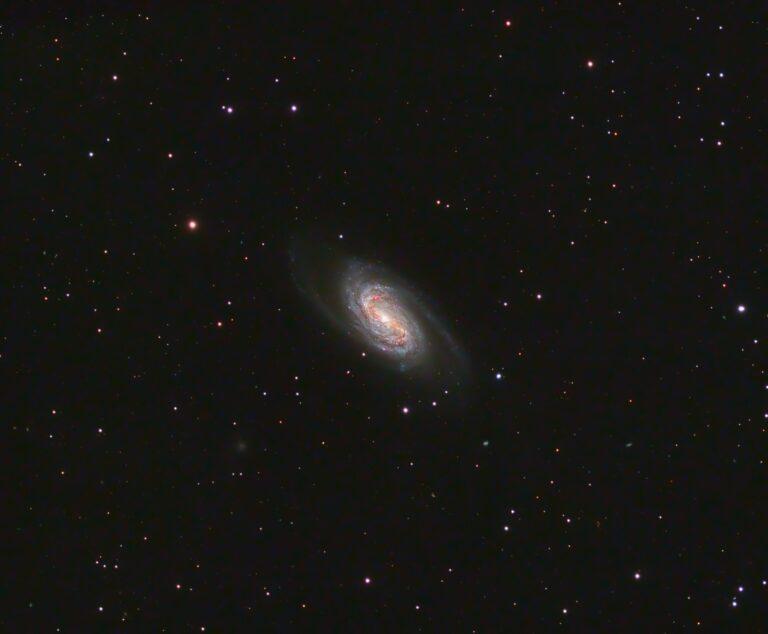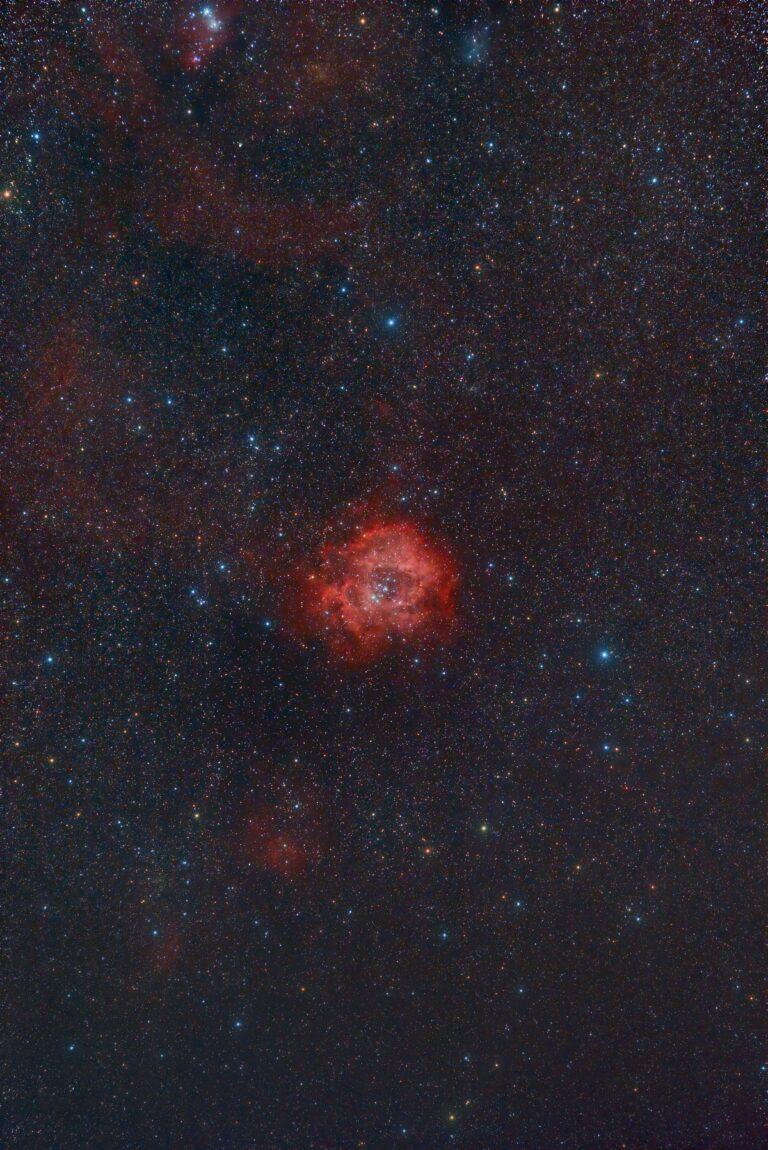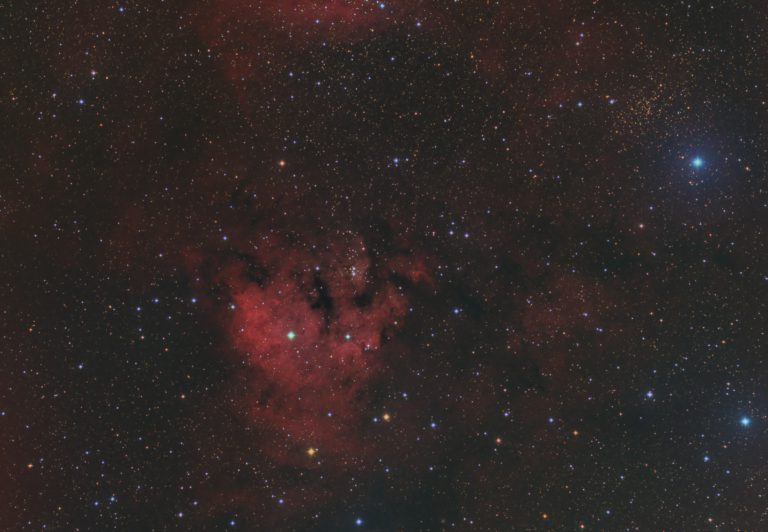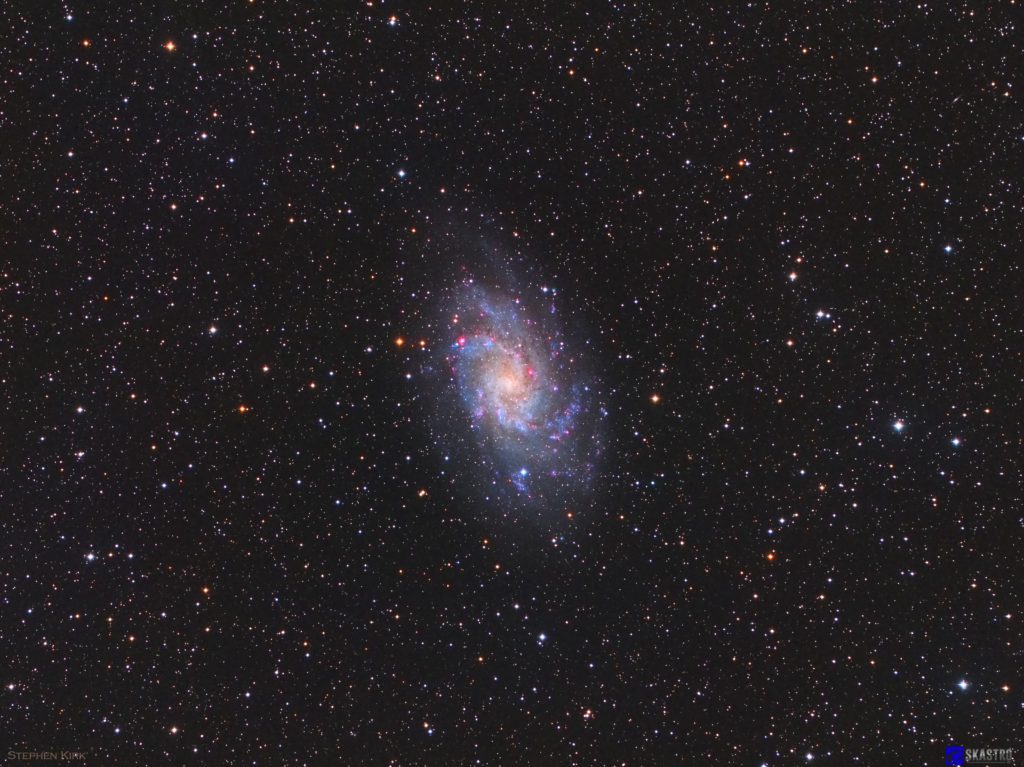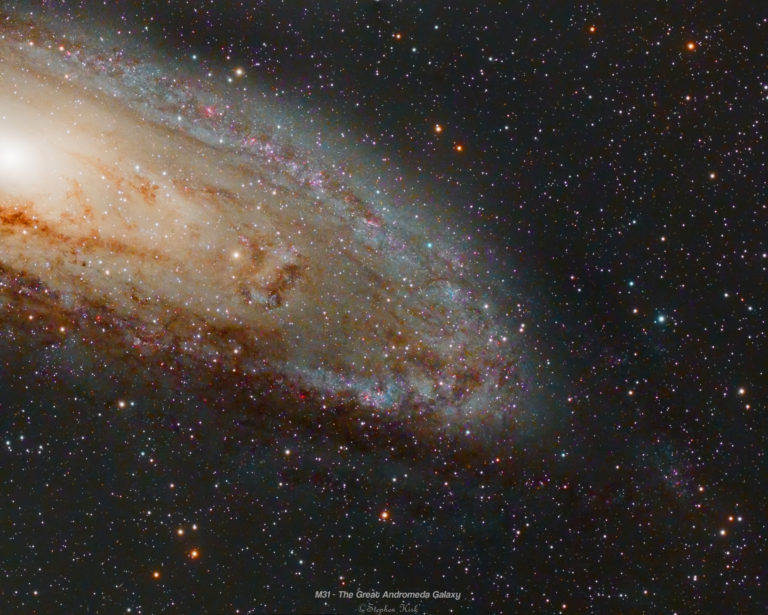A magnificent spiral galaxy with TEC 140 and Atik 460 Many astronomers consider NGC 2903 the best and brightest galaxy that isn’t included in the famous Messier list and are surprised Messier himself didn’t include it in his catalogue. It is very photogenic and brighter than several other galaxies that are included in Messier’s list such as M65 and M66. It is located in Leo to the right of the “sickle” of Leo and is about 30 million light years distant. Full resolution image here (opens in a new tab). If you open the full resolution image you will see many tiny, remote galaxies in the depths of the Universe. Technical Detail Imaged with my TEC140 telescope and Atik 460 CCD camera with Astrodon E series LRGB filters on the 25th and 26th March 2022. The data set is as follows with the luminance binned 1×1 and the RGB at…
Rosette Nebula In Very Wide Field Image taken with a Samyang 135mm DSLR lens and QHY268C Colour CMOS camera in January 25th 2023 when high to The South. A total of 30 x 120s exposures at F4. I used NINA software for image acquisition and processed in PixInsight. I wanted to set the Rosette in a very wide field so as to see the surrounding nebulosity. I have imaged The Rosette Nebula before with a FSQ85 telescope which can be found here. Annotated version of the nebula Finder Chart
Sh2-171 in Cepheus Sh2-171 is a star forming region in the constellation of Cepheus in the far northern hemisphere of the sky. Imaged here with Takahashi FSQ85 and G2-8300 with Astrodon HaRGB filters.
M33 is a galaxy about 2.8 – 3 million light years away in the constellation of Triangulum. Along with M33, it is one of the Local Group of galaxies with which our own Milky Way galaxy shares the local universe. M33 is the most distant object that the human naked eye can see, appearing as a ghostly white smudge on a very dark night from clear skies. It is a magnificent spiral galaxy about half the size of our own galaxy and because of its close proximity to us it appears very large in our skies and is am oft-photographed object by many, myself included. M33 Galaxy in Triangulum I’ve imaged M33 multiple times. For example, with the same FSQ85 telescope here and also at a closer image scale with the TEC140 refractor here. This time I have set the galaxy in a slightly wider field by utilising the FSQ85 0.73…
M31 is one of the most favoured and popular imaging targets in the night sky; it is bright, large and very photogenic. I have imaged this galaxy numerous times, for example, in this LRGB version and in this OSC version. Since the galaxy is so large, each of these images is set in a wide field, one of 3 degrees horizontally and 2 degrees vertically across the field of view which equates to six times the diameter of the full moon. Many newcomers do not appreciate how large these objects are in the sky. Large but VERY dim! M31 in OSC from a QHY268C and Takahashi FSQ85 refractor The above image is at a resolution of 4.16arcsec/pixel. On such a large object as M31 this allows the entire galaxy to be imaged in one field of view on a wide field refractor such as the FSQ85 but does not allow…

